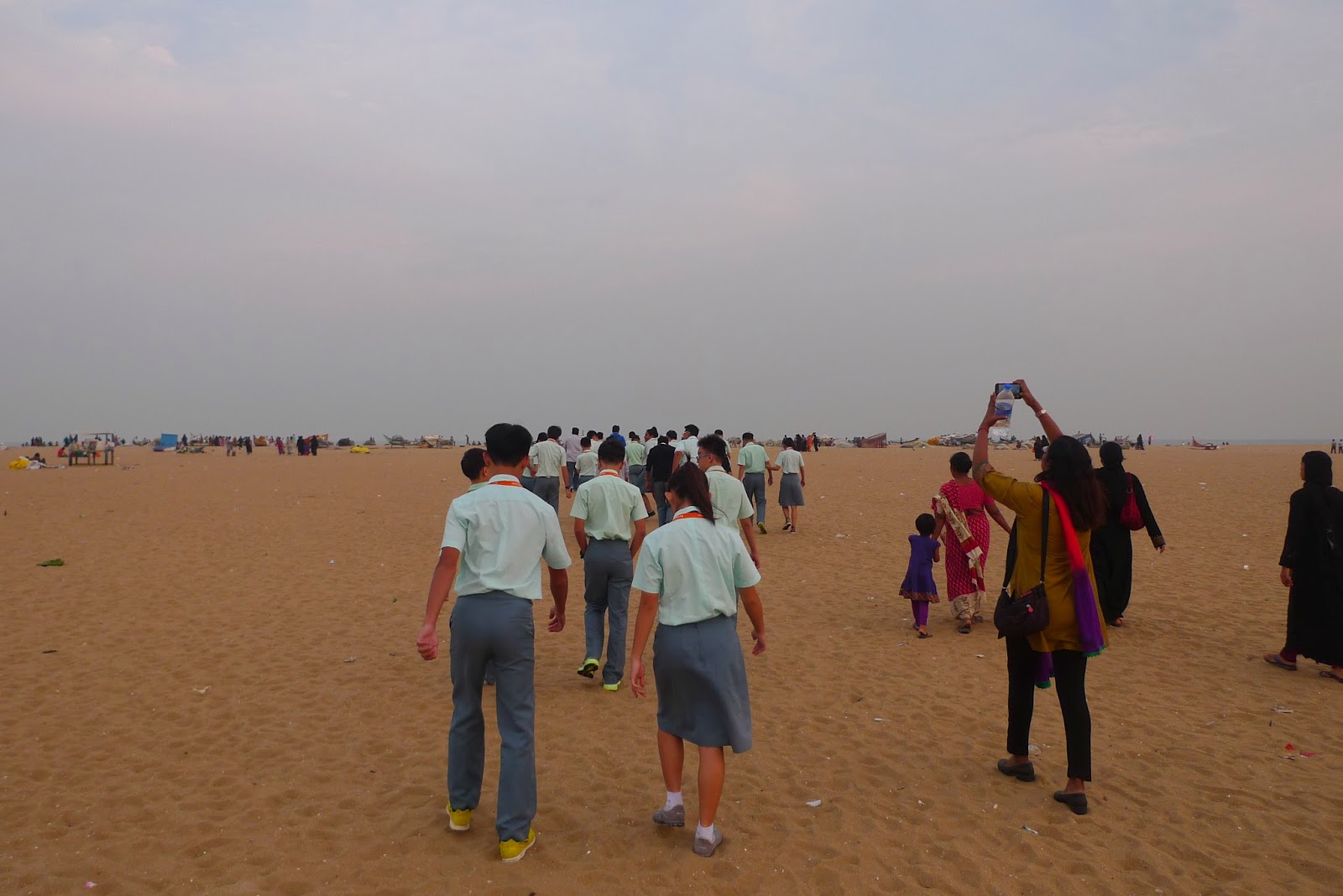Saturday, 8 November 2014
Day 4
We had breakfast and set off on
an hour long trip to a small isolated village. In the village, we experienced
extraordinary activities relating to the traditional Indian culture. We were
first welcomed by the village chief who gave us more information on the
lifestyle of the locals living in the area. We were also introduced to some
authentic folk dance whereby the dancers used a local instrument and they
taught us how to do some simple dance steps. We danced as a group by modelling the steps
the dancers used and we really enjoyed dancing to the fast beat of the music
played by the dancers using their traditional instrument.
Kolam
A relative of the village chief
demonstrated to us the construction of a ‘ kolam’.
Kolam creation plays a very significant
role in the lives of the Indians as the design drawn at the entrance of the
house signifies goodness and invites prosperity to their home. The intricate
designs were drawn using rice flour. We were captivated by the precision,
accuracy, dexterity and speed as the kolam was created. We were invited to create our own simple ‘kolams’
and we eagerly tried it out.
What interested us the most
during the village visit was the bullock cart ride. Everyone was very
enthusiastic to take a ride on the cart pulled by two cows. The cows brought us
throughout the small village to see different houses and agriculture. However,
during the short trip we were greeted by the ‘violent’ discharge of waste
matter from the bulls. Some of us were stained while others made out untouched.
Overall, it was a funny and interesting experience for all of us as we wiped the
stain away with wet wipes.
One interesting fact to take note
would be the innovative idea of theirs which involved the natural waste of cows
and bulls being used as natural fertilisers, resulting in less pollution of the
soil and helps with the organic growth of the plants.
Next, we went to the
Mahabalipuram which is a historical monument nearby Chennai. The tour guide gave us a lot of information
regarding the history of this UNESCO World Heritage site. This was built by the
Pallava’s of the famous Mahabharata epic, in the 7th century AD. These monuments were carved out of a single
rock and we were fascinated looking at the architecture and the beauty of the
carved sculptures. We wondered at the
technology the sculptors had used in those days. We drew to a conclusion that
even in the past the technology used in those days were advanced as it had
produced such outstanding monuments for us to marvel at. We also realized that the people were very
innovative, creative and had great appreciation for the arts.
We had a lunch at the Heritage Mamalipuram
restaurant. It was a buffet lunch and all of us liked the ‘chapatti’ and ‘pappadam’
and these were the first items to run out.
After having our lunch we went to
the Butter Ball monument where a large boulder was situated at the edge of the
hill. We were challenged to run up the hill without placing our hands on the walls
and attempt to push down the boulder,
until we realized that the boulder was immensely colossal. We slid down the
hillside multiple times and had a lot of fun playing on the natural slide!
Next on our itinerary was a visit
to the Aurobindo Ashram at Pondicherry. We took a short walk there barefooted,
as well as without our trusty gadgets. It was an interesting experience as we
had to maintain total complete silence.
We then headed to the beach to take a relaxing stroll along the
shore. We also put some time aside to bask in the breeze on the rocky seaside
after which we headed back to the bus to get on our way to the hotel.
We ended our day with a hearty
meal at the hotel restaurant filled with exotic dishes.
Sunday, 9th
November 2014
Day 5
Today we went to Auroville which is a universal town where men and women of all countries are able to live in peace and progressive harmony. The purpose of Auroville is to realize human unity. We viewed the Matrimandir in a nearby viewpoint as it requires special permission to enter the infrastructure. The Matrimandir symbolizes a lotus and has twelve leaves representing twelve qualities which are as follows: Goodness, Progress, Receptivity, Aspiration, Perseverance, Gratitude, Humility, Sincerity, Peace, Equality, Generosity and Courage. We felt that these were qualities we should all possess.
After our trip there we went to the Dhakshinchitra which is a heritage village where the unique lifestyle of Indians is revived based on their states. We took a tour around Dakshinchitra visiting all the heritage homes; try art and craft activities; play traditional games; and view exhibitions that explain some of the rich traditions of the different states in India.
We have captured some special memories of this visit and do enjoy viewing them as we firmly believe that a picture
says a thousand words!
Being in harmony with nature allows us to find peace and attain our goal in life = self-realization
- Xavier Ong
Friends at first sight!
- Sophia Koh
Appreciation - Treasure- Happiness
- Hafizan
Nothing is impossible. Even a rock can balance itself at the edge of the slope. Why can't we? We should be able to balance between our studies and other personal commitments.
- Andy Goh
United as one for a shared learning experience.
- Chang Yi Ting
Bravery - To communicate with each other!
- James Lai













































